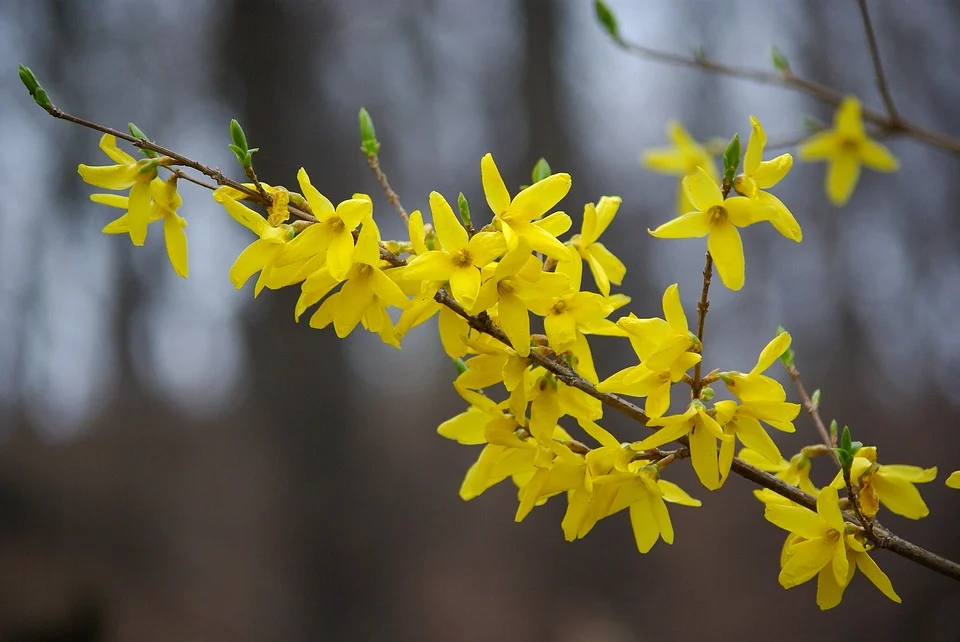
The last of the snow banks have melted, April showers are certainly in full force, and sporadic temperatures peaking in the 80’s could only mean one thing…SPRINGTIME! Yup, time to pack up the skis, boots and gloves and start preparing for summer fun. Simply an amazing time of year, forsythia has recently bloomed which officially ends the winter hibernation and begins a season of beauty, as the entire landscape slowly awakens to brighten our world.
As a certified arborist, springtime is a critical time of year for me. I am constantly asked questions such as: “Is my tree healthy?” or “Is my tree safe?” also “Is it going to fall on my house?” sometimes “Can you guarantee it will survive?” Another common question…“What is an arborist?” Perhaps we should start there. My college professor, Dennis Ryan, defined arboriculture as the art, science, business, and technology of community tree care. An arborist is simply a professional in this field, basically a tree expert. My background involves 4 years of college and 17 years of field experience with all aspects of tree care. Insect and disease diagnosis, hazard tree assessment, tree preservation, pruning, removal, large equipment operation, public speaking, consulting, and disaster recovery. After traveling all over the country, looking at thousands of trees, and working in all kinds of crazy positions, I finally decided there was “no place like home”. So here I am, practicing arboriculture in Ballston Spa.
So why is springtime so critical? This is a key diagnostic time of year for me. I can learn more about how a tree is feeling over these next 6 weeks, than any other time of year. Bud break (leaves popping out) is the most energy expending event in the trees annual cycle, so monitoring trees throughout bud break allows you to see exactly how the tree is functioning. Similar to checking a person’s health, the doctor needs to see you performing certain functions to make a diagnosis. A person may appear healthy by a basic visual inspection but once you ask them to speak, you may learn that they have a sore throat. All trees mid season “appear” to be healthy, since they can’t speak to us, we have to monitor throughout an entire season to figure out their health. So let’s get back to the common questions.
First of all, healthy and safe are two entirely different things when it comes to trees. Checking trees for safety is always first on my list. Spring is a great time to perform this inspection as the foliage has not yet developed and you can see the structure of the tree. Once the tree has fully leafed out, hazards may be hidden and you won’t notice that broken limb hanging over the swing set. So start out by taking a close look at the structure of your trees. Binoculars can come in handy to perform a thorough inspection of the trees trunk and branches. Look for any limbs that may have failed over the winter, deadwood, decay pockets, basically any wood without bark on it can create a hazard. The tree may very well be healthy, but a half broken 500 pound limb, suspended 60 feet up could certainly make it unsafe.
Now that you have completed your safety inspection, its time for the hard part…“Is the tree healthy?” Bud break allows your trees to talk to you a bit. I look at it somewhat like your annual physical. The tree is performing all these tasks and you have the opportunity to monitor its performance. Watch the buds developing day by day throughout spring and pay attention to multiple trees of the same species. If you have a Sugar Maple on each side of the driveway and one has foliage at half leaf expansion while the other is still just swollen buds then the one struggling to break is screaming for help. Eight weeks from now they will both appear to be the same and you wouldn’t think anything of it. I’ll guarantee you that once fall arrives. the one struggling to break bud in spring will turn bright orange a couple weeks sooner than its healthy neighbor. Once again, screaming for help. The fall is also a great time for health assessment. Trees under stress will turn fall color and leaves will senesce much faster than healthy trees.
I’m sure after reading this you won’t help but notice a few of the items we’ve discussed. Start honing your skills by keeping an eye on monocultures. Most street tree plantings and commercial parking lots are great examples of monocultures. Basically an entire row or planting bed with multiple trees of the same species. You’ll be able to pick out the trees under stress as you drive through the village or park at the local shopping center. You’ll see all of them leafed out and one still struggling to break bud or one of the pears is still in flower while the rest have already passed that phase. Then in the fall it’s a dead giveaway when all the trees are still green and one is bright yellow. From there you can figure out what kind of trees you have and find another one in the neighbor hood to constantly compare its progress too, before you know it, trees will be screaming at you everywhere you go.
As far as “Will the tree fall on my house?” goes…hmmmm…I can’t predict that, I’ve seen a lot of trees fail that showed no prior signs. I do know that Mother Nature and old man winter will get angry from time to time and there is simply no stopping them. All we can do is identify hazards and take proper action to keep our properties as safe as possible. If I had that skill I wouldn’t be here typing this article, with that said, I certainly can’t guarantee anything will still be alive in 5 years or even next year for that matter. I’ve heard many stories of doctors being unable to figure out health issues with people and “I’m just a tree guy”.
